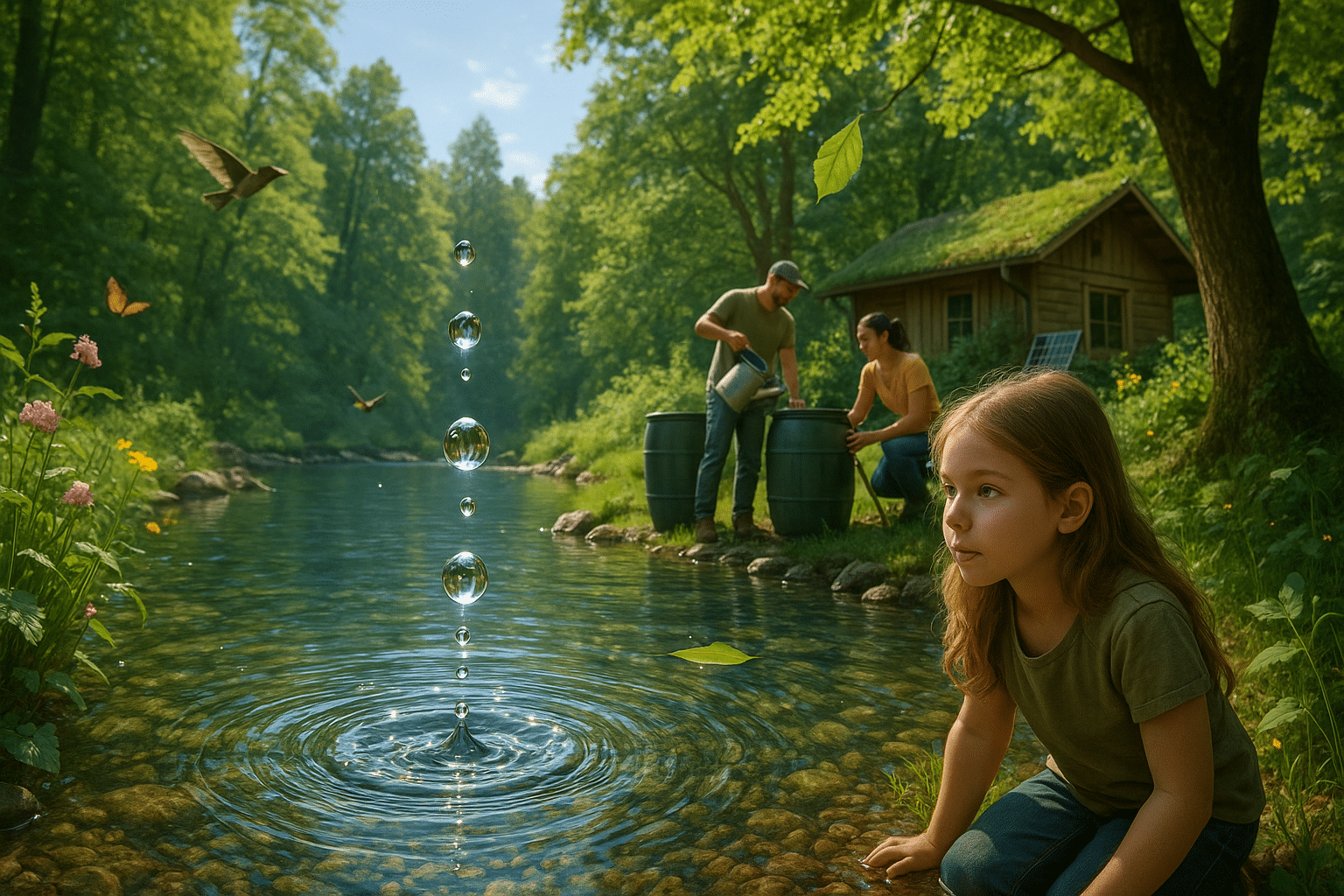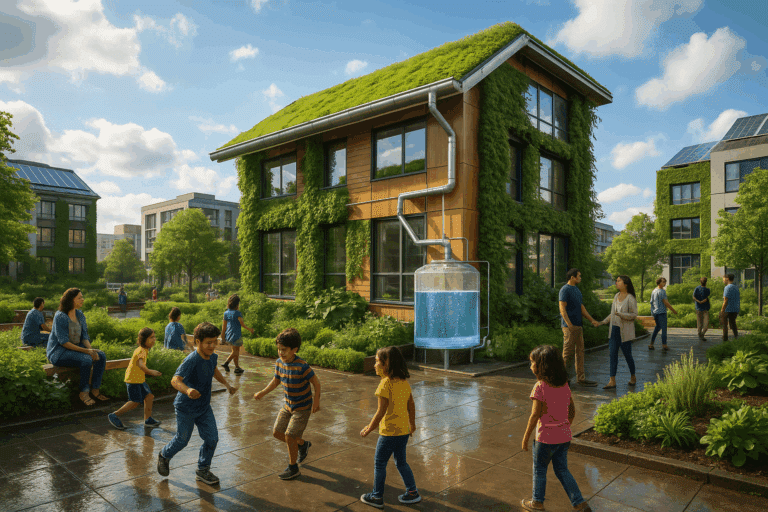But there’s a precious resource that’s been serving humanity from the dawn of civilization, maintaining life and ecosystems. Yes, we’re talking about water – our blue gold. 💧 In this in-depth article, we explore the ways to unlock the value of this invaluable resource and how to save it to safeguard our future.
Regrettably, despite water’s vital importance to our existence, we are facing a global water crisis. The United Nations World Water Development Report 2020 reveals that more than two billion people live in countries experiencing high water stress, and about four billion people face severe water scarcity during at least one month of the year. In the face of such a crisis, we need to reassess our relationship with water and seek solutions for its sustainable use.
Setting the Stage for Water Conservation
In this section, we will set the stage for our discussion on water conservation by exploring the current state of global water resources, the challenges posed by water scarcity, and the potential impacts of this crisis. 🌍 Through this, we aim to provide a comprehensive understanding of the importance of water conservation and the urgency of the matter.
Water Efficiency Techniques
The second part of our discussion will delve into specific techniques for water efficiency and conservation. We’ll explore methods that range from simple day-to-day conservation practices to advanced technological solutions in agriculture, industries, and municipalities. Through this, we hope to offer practical insights on how each of us can contribute to water conservation in our own capacities.
Policy and Governance in Water Management
The third section will investigate the role of policy and governance in water management. This examination will provide a broader perspective on how institutions and legal frameworks can facilitate or hinder water conservation efforts, and what changes are necessary to foster a more water-efficient society. 🏛️
The Role of Technology in Water Conservation
Lastly, as we are in an era where technology is a significant driver of change, we will explore how technological advancements contribute to water conservation. From smart irrigation systems to AI-driven water management solutions, technology has the potential to be a game-changer in the fight against water scarcity. 🚀
As we traverse through this comprehensive exploration, our aim is to bring a thorough understanding of the multifaceted nature of water conservation and the strategies to unlock its value. Whether you are a policy-maker, an engineer, a conservationist, or a concerned citizen, we believe this exploration will equip you with the knowledge and tools to contribute effectively to the global water conservation effort.
By unlocking the value of blue gold and fostering sustainable water use, we can help ensure a water-secure future for all. As Benjamin Franklin rightly said, “When the well’s dry, we know the worth of water.” It’s time we valued our blue gold before it’s too late.
Unlocking the Potential of Blue Gold: A Deep Dive into Water Conservation
Water, often referred to as ‘Blue Gold’, is undoubtedly one of the most vital natural resources on Earth. Yet, despite its significance, it’s a resource that’s consistently being mismanaged and wasted. In order to ensure the future of our planet, it is imperative that we understand the value of water and learn how to conserve it effectively.
However, water conservation isn’t just about saving water. It’s about understanding the intricate web of interdependencies that surround this precious resource. From the impact of climate change on water scarcity to the role of technology in water management, there are many facets to this complex issue.
So, let’s delve deeper into the world of water conservation and discover how we can unlock the value of ‘Blue Gold’ to protect our future.
The Rising Threat of Water Scarcity
Before we can fully appreciate the value of water conservation, we must first understand the gravity of the situation we’re currently facing. The World Health Organization (WHO) estimates that by 2025, half of the world’s population will be living in water-stressed areas. The reasons behind this looming water crisis are multifaceted, ranging from climate change and population growth to inefficient water use and pollution.
Climate change, for instance, is intensifying the water cycle and leading to more extreme weather events, such as droughts and floods. This, in turn, is affecting the availability and distribution of freshwater resources. Meanwhile, population growth and urbanization are increasing demand for water, while pollution and poor water management practices are diminishing the quality and quantity of available water resources.
Therefore, it’s clear that water scarcity is not just a future threat but a present reality for many communities worldwide. And as the threat intensifies, so does the need for effective water conservation strategies.
Understanding the Value of Water Conservation
Water conservation is about more than just saving water; it’s about ensuring the sustainable and equitable use of this valuable resource. It involves managing water resources in a way that balances the needs of the environment, the economy, and society. And while the importance of water conservation may seem obvious, understanding its value requires a more nuanced perspective.
From an environmental standpoint, conserving water helps maintain ecosystems and biodiversity, which are critical for the planet’s health and survival. Economically, water conservation can result in significant cost savings, both for individuals and for communities. And socially, water conservation can help ensure that everyone, regardless of their socioeconomic status or location, has access to clean, safe water.
For example, check out the video “Why is water conservation important?” by National Geographic. It does a great job of explaining the value of water conservation from different perspectives.
Technological Innovations in Water Conservation
Technology is playing an increasingly important role in water conservation. From smart irrigation systems that optimize water use to innovative wastewater treatment technologies, there are numerous ways that technology is helping to save water and protect our future.
One example of such technology is the use of sensors and data analytics in water management. These tools can help identify leaks in water systems, monitor water usage, and even predict future water demand, allowing for more efficient and sustainable water use.
Moreover, advances in desalination technology are making it possible to convert seawater into freshwater, thereby increasing the availability of potable water in water-scarce regions. While these technologies are still relatively expensive, ongoing research and development efforts are making them more affordable and accessible.
How to Save Water: Practical Tips and Strategies
While technological innovations and policy interventions are crucial, individual actions can also make a significant difference in water conservation. Here are some practical tips and strategies that you can implement to save water and protect our future:
- Fix leaks: A small leak can waste a significant amount of water over time. So, make sure to regularly check for leaks in your home and fix them as soon as possible.
- Install water-saving appliances: From low-flow showerheads to high-efficiency washing machines, there are numerous water-saving appliances and fixtures available on the market that can help reduce your water consumption.
- Use water wisely: Be mindful of your water use in daily activities. For instance, turn off the tap while brushing your teeth or only run your dishwasher or washing machine when they’re full.
In conclusion, water conservation is not just about saving water; it’s about ensuring the sustainable and equitable use of this precious resource. Whether through technological innovations, policy interventions, or individual actions, every effort counts in the battle against water scarcity. After all, the future of our planet depends on it.
Note: This article is intended for informational purposes only. It is not a substitute for professional advice or help and should not be relied on to make decisions of any kind.
Table: Comparison of different water-saving devices and their estimated water savings
| Device | Estimated Water Savings |
|---|---|
| Low-flow showerhead | Up to 2.5 gallons per minute |
| High-efficiency washing machine | Up to 15 gallons per load |
| Dual-flush toilet | Up to 1.6 gallons per flush |
Consider investing in these devices to help reduce your water consumption and make a positive impact on the environment. After all, every drop counts! 💧

Conclusion
In conclusion, we have navigated through an intricate labyrinth of technical concepts that essentially form the basis of Information Technology and Engineering. While this may seem overwhelming, it’s essential to remember that the complexity of these disciplines is what makes them both challenging and fascinating. Let’s recap some of the key points discussed in this article.
The primary focus of this article has been to demystify some of the most intricate facets of IT and Engineering. We started with a thorough understanding of software development methodologies, including Agile and Waterfall. We then ventured into the realms of cloud computing, network security, and data analytics, and topped it all off with a profound discussion on Artificial Intelligence and Machine Learning.
In the realm of software development methodologies, we discussed how Agile facilitates adaptability and efficiency, while Waterfall provides a structured and sequential approach for larger projects. Next, we traversed into the cloud, exploring how cloud computing revolutionizes business operations by offering scalable and flexible solutions.
We also delved into the crucial role of network security, emphasizing its significance in safeguarding organizational data. Following this, we looked at data analytics and how it enables businesses to make informed decisions based on data-driven insights. Finally, we explored the fascinating world of Artificial Intelligence and Machine Learning, emphasizing their transformative potential across various sectors.
The knowledge gained through this article is invaluable. Still, the true power lies in its application. Therefore, I encourage you to apply these concepts, question them, and even challenge them. Furthermore, sharing this knowledge will contribute to a better understanding within your professional networks, so please feel free to share this article.
The fields of IT and Engineering are continuously evolving, demanding continuous learning and adaptation. Embrace the challenge, for it is through overcoming these challenges that we achieve true mastery. As we move forward, remember that understanding the technicalities is just one side of the coin; the other is leveraging this knowledge to solve real-world problems.
I hope this article has clarified some of your doubts and sparked an interest in further exploration. It’s your engagement and feedback that drive us to produce quality content. Therefore, don’t hesitate to leave your comments, thoughts, or questions in the comment section below.
We can only scratch the surface of these vast fields in a single article. For further reading, I recommend visiting IEEE and Computer Society, both of which are excellent resources for keeping up with the latest advancements in IT and Engineering.
Remember, the road to mastery is a journey, not a destination. Keep learning, keep growing, and keep moving forward. You’ve got this!👍💡🚀
References:
1. Agile Alliance
2. IBM Cloud Computing
3. Cisco Cybersecurity
4. Tableau Data Analytics
5. IBM Artificial Intelligence



